#andrew bushell
Explore tagged Tumblr posts
Text
*Agent Lafferty throws his badge at Waverly*
WAVERLY:
*catches it, looks at it and pretends to be confused*
“Black Badge.”
AGENT LAFFERTY: “It’s a cross-border taskforce that investigates the paranormal.”
*Waverly throws it at Wynonna who misses the catch*
NICOLE:
*smiles incredulously but secretly knowingly*
“Yeah.”
This is how to do exposition on lore from a TV show that has had 4 seasons preceding it for a 90-minute special of a self-contained story on a new TV art/entertainment network/streaming service platform without treating the veteran audience as dumb or making the characters seem very out of character.
You keep it simple and you show that the characters know exactly what’s going on without having them explain that they do. It’s not only funny for the veteran watchers but also a clever and quick way to get the newbie watchers to the IP clued up on what’s what.
Well done, Emily. I can see exactly what you did here by having this random character explain Black Badge but having the core characters feign their ignorance because, obviously, they know all about Black Badge.
#wynonna earp: vengeance#wynonna earp#vengeance#melanie scrofano#waverly earp#dom pc#nicole haught#katherine barrell#doc holliday#tim rozon#agent lafferty#andrew bushell#exposition#lore#spoilers
17 notes
·
View notes
Text

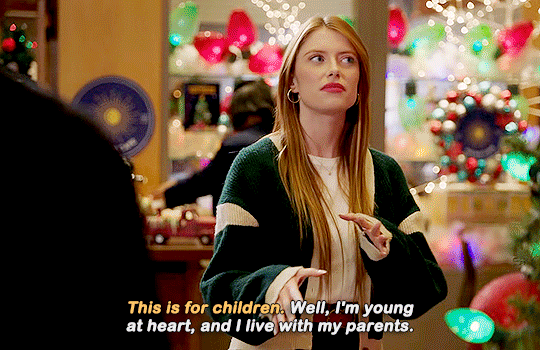


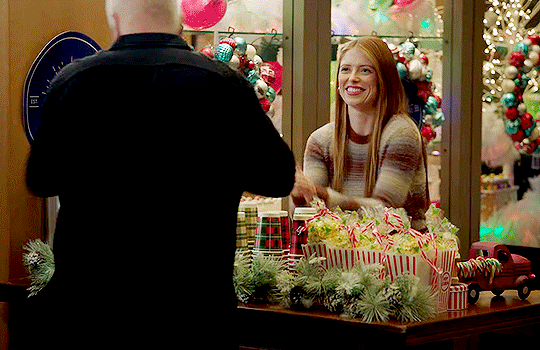
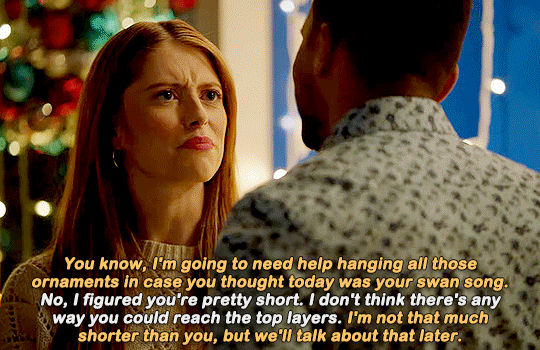
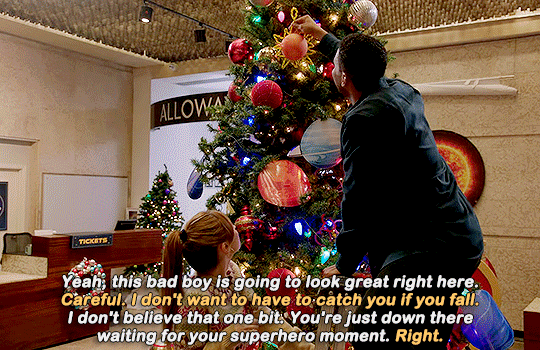
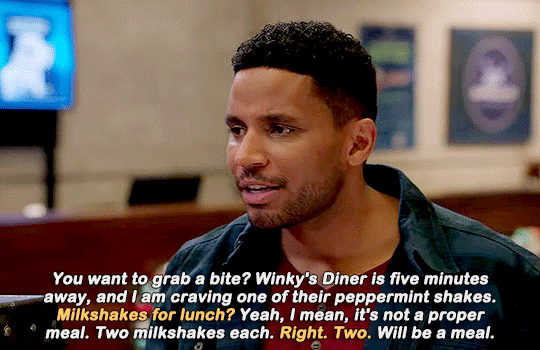


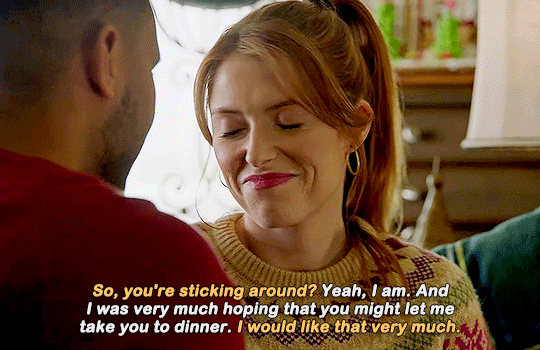
Andy & Celeste - Under the Christmas Sky (2023)
25 notes
·
View notes
Text
"Oh... no. No, never! (...) No, no, we've never dated. No, there's no need to be jealous."
--Sarah (Mayko Nguyen) to Micheal (Andrew Bushell), when he wonders whether she and Charlie (John Reardon) are exes because they "were so in sync at the casino"!
It's true they are not (sigh!) exes, but both Rex (Diesel vom Burgimwald) and I reckon the lady doth protest too much!
#Hudson and Rex#Hudson and Rex Season 4#Hudson and Rex 4x14#H&R 4x14#Roll the Bones#Sarah Truong#Michael#Charlie Hudson#Rex#Mayko Nguyen#Andrew Bushell#John Reardon#Diesel vom Burgimwald#that dog is so expressive!!!#and that episode was such fun#I love undercover episodes#and I particularly adored smooth and suave Joe Donovan!#and Brielle was played by Erin Agostino (I love Effie but I sometimes miss Nina on Murdoch; I always hoped she's return from France with a#Moulin Rouge girlfriend!!)#Canadian TV Series#Canadian TV Show#Canadian TV#Canadian Television#Canada Chronicles
9 notes
·
View notes
Text
















The Love Club: Lauren's Dream - photo preview
#the love club: lauren#hallmark movies now#photo preview#chantel riley#andrew bushell#brittany bristow#lily gao#camille stopps#hallmark channel#the love club movie series#acquisition#hallmark movies
3 notes
·
View notes
Text
24-Karat Christmas (2024 OWN)
24-Karat Christmas (2024 OWN) 📺. Stream/Watch the Movie (Ad): Subscribe to the Lifetime Movie Club Cast: Samantha Marie Ware, Curtis Hamilton, Andrew Bushell Director: Winnifred Jong Writer(s): Tobin Addington ➡️ Check out our Youtube Channel: Lifetime Uncorked: Lifetime Movie Reviews 🎧 Listen to the Lifetime Uncorked Podcast: Listen Now 🍷 Support the show with a $5 tip:…
#2024#24-Karat Christmas#Andrew Bushell#Christmas#Christmas Movie#Curtis Hamilton#Holiday Movie#OWN#Samantha Marie Ware
0 notes
Text


Just a guy and a girl, hanging around outside the Fisherman's Rest
#the scarlet pimpernel#the scarlet pimpernel 1934#merle oberon#leslie howard#anthony bushell#joan gardner#sir percy blakeney#marguerite blakeney#pergot haha#sir andrew ffoulkes#suzanne de tournay
41 notes
·
View notes
Text




Ricky Stanicky (2024)
"Thanks for coming out tonight, ladies and gentlemen. So horny to be here."
#ricky stanicky#jeffrey bushell#brian jarvis#james lee freeman#peter farrelly#pete jones#mike cerrone#david occhino#jason decker#zac efron#john cena#andrew santino#riley stiles
1 note
·
View note
Text
Ricky Stanicky (2024) Review
When three childhood friends pull off a prank that goes wrong they invent Ricky Stanicky and twenty years later they still blame this imaginary person for everything they do wrong and if they want a weekend away somewhere! ⭐️⭐️⭐️ Continue reading Ricky Stanicky (2024) Review

View On WordPress
#2024#Alieu Chol#Allan Lim#Amazon Original#Amazon Prime UK#Andrew Santino#Anja Savcic#Brian Jarvis#Comedy#Daniel monks#Debra Lawrance#Dieu Vieil Mbelo#Gaius Nolan#Heather Mitchell#Jackie Flynn#James Lee Freeman#Jane Badler#Jasmine Anders#Jasper Bagg#Jeffrey Bushell#Jermaine Fowler#John Cena#Kevin J. Flynn#Lex Scott Davis#Marta Kaczmarek#Nathan Jones#Oscar Wilson#Peter Farrelly#Review#Ricky Stanicky
1 note
·
View note
Text
Ricky Stanicky (15): 2024 really is the year for Imaginary Friends!
#onemannsmovies #filmreview of "Ricky Stanicky" on #PrimeVideo. #RickyStanicky. A one-joke comedy that quickly becomes tiresome. 2/5.
A One Mann’s Movies review of “Ricky Stanicky” (2024). It’s just amazing how new releases will follow trends. 2022 was the year of the Multiverse. Last year was the year of AI. This year, we seem to have a glut of films about Imaginary Friends! Last week I reviewed “Imaginary“: a horror film about an imaginary friend. In mid-May we are due to get “IF” – probably the big-hitter for the year,…
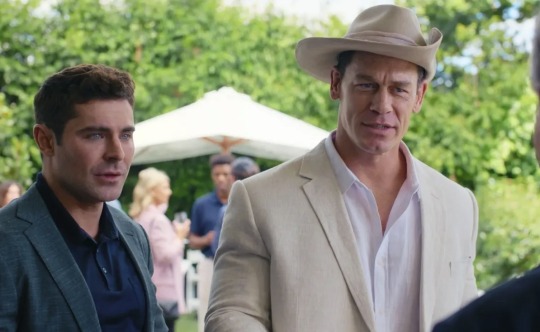
View On WordPress
#RickyStanicky#Andrew Santino#Anja Savcic#bob-the-movie-man#Brian Jarvis#Cinema#David Occhino#Film#film review#James Lee Freeman#Jason Decker#Jeffrey Bushell#Jermaine Fowler#John Cena#Lex Scott Davis#Mike Cerrone#Movie#Movie Review#One Man&039;s Movies#One Mann&039;s Movies#onemannsmovies#onemansmovies#Pete Jones#Peter Farrelly#Review#Ricky Stanicky#Zac Efron
1 note
·
View note
Text
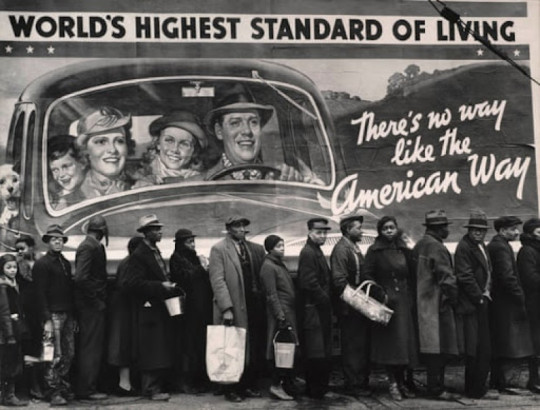
1937, World's Highest Standard of Living :: Margaret Bourke-White
* * * *
LETTERS FROM AN AMERICAN
October 28, 2024
Heather Cox Richardson
Oct 29, 2024
On Monday, October 28, 1929, New York’s Metropolitan Opera Company opened its forty-fifth season.
Four thousand attendees in their finest clothes strolled to the elegant building on foot or traveled in one of a thousand limousines to see Puccini’s Manon Lescaut, the melodramatic story of an innocent French girl seduced by wealth, whose reluctance to leave her riches for true love leads to her arrest and tragic death. Photographers captured images of the era’s social celebrities as they arrived at opening night, their flash bulbs blinding the crowd that had gathered to see the famous faces and expensive gowns.
No one toasting the beginning of the opera season that night knew they were marking the end of an era.
At ten o’clock the next morning, when the opening gong sounded in the great hall of the New York Stock Exchange, men began to unload their stocks. So fast did trading go that by the end of the day, the ticker recording transactions ran two and a half hours late. When the final tally could be read, it showed that an extraordinary 16,410,030 shares had traded hands, and the market had lost $14 billion. The market had been uneasy for weeks before the twenty-ninth, but Black Tuesday began a slide that seemingly would not end. By mid-November the industrial average was half of what it had been in September. The economic boom that had fueled the Roaring Twenties was over.
Once the bottom fell out of the stock market, the economy ground down. Manufacturing output dropped to levels lower than those of 1913. The production of pig iron fell to what it had been in the 1890s. Foreign trade dropped by $7 billion, down to just $3 billion. The price of wheat fell from $1.05 a bushel to 39 cents; corn dropped from 81 to 33 cents; cotton fell from 17 to 6 cents a pound. Prices dropped so low that selling crops meant taking a loss, so struggling farmers simply let them rot in the fields.
By 1932, over one million people in New York City were unemployed. By 1933 the number of unemployed across the nation rose to 13 million people—one out of every four American workers. Unable to afford rent or pay mortgages, people lived in shelters made of packing boxes.
No one knew how to combat the Great Depression, but certain wealthy Americans were sure they knew what had caused it. The problem, they said, was that poor Americans refused to work hard enough and were draining the economy. They must be forced to take less. “Liquidate labor, liquidate stocks, liquidate the farmers, liquidate real estate,” Treasury Secretary Andrew Mellon told President Herbert Hoover. “It will purge the rottenness out of the system. High costs of living and high living will come down. People will work harder, live a more moral life. Values will be adjusted, and enterprising people will pick up the wrecks from less competent people.”
Slash government spending, agreed the Chicago Tribune: lay off teachers and government workers, and demand that those who remain accept lower wages. Richard Whitney, a former president of the Stock Exchange, told the Senate that the only way to restart the economy was to cut government salaries and veterans’ benefits (although he told them that his own salary—which at sixty thousand dollars was six times higher than theirs—was “very little” and couldn’t be reduced).
President Hoover knew little about finances, let alone how to fix an economic crisis of global proportions. He tried to reverse the economic slide by cutting taxes and reassuring Americans that “the fundamental business of the country, that is, production and distribution of commodities, is on a sound and prosperous basis.”
But taxes were already so low that most folks would see only a few extra dollars a year from the cuts, and the fundamental business of the country was not, in fact, sound. When suffering Americans begged for public works programs to provide jobs, Hoover insisted that such programs were a “soak the rich” program that would “enslave” taxpayers, and called instead for private charity.
By the time Hoover’s term ended, Americans were ready to try a new approach to economic recovery. They refused to reelect Hoover and turned instead to New York Governor Franklin Delano Roosevelt, who promised to use the federal government to provide jobs and a safety net to enable Americans to weather hard times. He promised the American people a “New Deal”: a government that would work for everyone, not just for the wealthy and well connected.
As soon as Roosevelt was in office, Democrats began to pass laws protecting workers’ rights, providing government jobs, regulating business and banking, and beginning to chip away at the racial segregation of the American South. New Deal policies employed more than 8.5 million people, built more than 650,000 miles of highways, built or repaired more than 120,000 bridges, and put up more than 125,000 buildings.
They regulated banking and the stock market and gave workers the right to bargain collectively. They established minimum wages and maximum hours for work. They provided a basic social safety net and regulated food and drug safety. And when World War II broke out, the new system enabled the United States to defend democracy successfully against fascists both at home—where they had grown strong enough to turn out almost 20,000 people to a rally at Madison Square Garden in 1939—and abroad.
The New Deal worked so well that common men and women across the country hailed FDR as their leader, electing him an unprecedented four times. Republican Dwight D. Eisenhower built on the New Deal when voters elected him in 1952. He bolstered the nation’s infrastructure with the Federal-Aid Highway Act, which provided $25 billion to build 41,000 miles of highway across the country; added the Department of Health, Education, and Welfare to the government and called for a national healthcare system.
Eisenhower nominated former Republican governor of California Earl Warren as chief justice of the Supreme Court to protect civil rights, which he would begin to do with the 1954 Brown v. Board of Education decision months after joining the court. Eisenhower also insisted on the vital importance of the North Atlantic Treaty Organization (NATO) to stop the Soviet Union from spreading communism throughout Europe.
Eisenhower called his vision “a middle way between untrammeled freedom of the individual and the demands of the welfare of the whole Nation.”
The system worked: between 1945 and 1960 the nation’s gross national product (GNP) jumped by 250%, from $200 billion to $500 billion. The vast majority of Americans of both parties liked the new system that had helped the nation to recover from the Depression and to equip the Allies to win World War II.
Politicians and commentators agreed that most Democrats and Republicans shared a “liberal consensus” that the government should regulate business, provide for basic social welfare, promote infrastructure, and protect civil rights. It seemed the country had finally created a government that best reflected democratic values.
Indeed, that liberal consensus seemed so universal that the only place to find opposition was in entertainment. Popular radio comedian Fred Allen’s show included a caricature, Senator Beauregard Claghorn, a southern blowhard who pontificated, harrumphed, and took his reflexive hatred of the North to ridiculous extremes. A buffoon who represented the past, the Claghorn character was such a success that he starred in his own Hollywood film and later became the basis for the Looney Tunes cartoon rooster Foghorn Leghorn.
LETTERS FROM AN AMERICAN
HEATHER COX RICHARDSON
#Heather Cox Richardson#Letters From An American#the great depression#American History#FDR#economic justice#economic equality#the 20th century#liberal consensus#Government for the people#Margaret Bourke-White
16 notes
·
View notes
Text

The Heart Don't Lie Chapter 82
AO3
The documents inside are remarkably well preserved. They lay them out by year. Brian had kept meticulous records, listing everything from how many bushels of grain was harvested, to exactly how many eggs each chicken laid.
“You must recall, this was right after the failed Raising. The bloody English, no offense Claire,” she waves it off, “they were taking most of what the Scots produced.”
“Aye,” and Ian adds to what his wife said, “and a large family to see to, not to mention the tenants.”
Claire lifts up one of the pages. She reads aloud.
‘My dear wife was safely delivered of another bairn, a son, this morning. I feared for her confinement with the dastardly Sassanachs taken sae much of what Lallybroch produces. She is strong and another son is added to our brood.’
“I wonder how many sons they had.”
“Well Sassanach,” he winks at her in his own unique way, like an owl, “I may be able to answer that.” He reads the page he holds.
‘Wee Faith passed over night. Despite our best efforts, the poor lass wasn’t strong enough. I mourn her untimely death but thank God for the six strong sons and four strong daughters he has gifted us with.’
Jenny and Ian cross themselves.
“Ten, would have been eleven, that is a lot of mouths to feed. Maybe that is why they kicked Laura and Andrew out?”
“Or not,” Ian holds up another page, “I believe I have found the answer.”
He clears his throat and reads.
‘A queer thing happened today. Our kitchen maid, Laura, has taken off. She and her wee lad have left our home. I can’t account for why they would do such. My Lord Brian, was naught but kind to her, even after she came to our home, carrying a bairn with no husband. We have grown to love her wee lad, Andrew. I pray she and he find their way back.’
“My Lord Brian. So that was written by his wife.”
“Aye Jenny. The question is, why would she just up and leave a place where she and her son were welcomed and safe?”
“That is peculiar,” Jamie frowns, still searching through the various records, “I pray the answer is in here somewhere.”
“Well, her prayer was partly answered. Andrew has found his way back.”
Claire ‘s comment has them all smiling. They continue to search. Those papers already looked at are carefully set to the side.
It is Claire that finds the answer.
“Guys, listen,” once she has all their attention, she read,
‘Laoghaire, our cousin came by with her new husband, Simon. In the course of visiting with her, the mystery of what became of Laura and Andrew was put to rest.
She mentions that she is glad to see them gone. We ask why.
Her report,
“Why she was a witch. I saw her, with my own eyes, perform healing magic. She breathed into a dead child and brought it back to life. I confronted her and she wouldn’t say how she did it. Now, if her gift was from God, she would have said as much. I called her a witch and told her to get out of my cousin’s house. I didn’t wish to trouble you with the knowledge unless she didn’t.”
Well, I don’t know what to believe about that. Laoghaire has the tendency to exaggerate.
I least my mind is at ease about why she left.’
“Bloody intervening bosom,” Jenny shakes her head, “poor lass. I guess I can see why CPR would be considered witchy in that time. Still…”
“If she knew the fate of Laura, she wasn’t going to tell them,” Ian stands and walks around the room, “still she has to be the one who stirred the mob up.”
“Well know we know our kin didn’t kick her out. It doesn’t sound like they would have. They would have at least let her explain.”
“Yes Jamie, but with a child to see too, she wouldn’t have taken a chance. I wonder what the parents of the child she restored to life thought?”
“That is a good question. Probably lost in time but still…”
They pack the boxes back up.
#my writing#outlander fanfic#the heart don't lie#chapter 82#jamie and claire#outlander fandom#cannon divergence#modern au
10 notes
·
View notes
Photo




The Love Club movie series is available to watch on Hallmark Movies Now. The first film in the series, Nicole’s Pen Pal will be premiering March 4th on the Hallmark Channel.
#hallmark movies now#the love club movie series#hallmark movies#acquisition#the love club: nicole#the love club: sydney#the love club: lauren#the love club: tara#brittany bristow#marcus rosner#lily gao#jesse hutch#chantel riley#andrew bushell#camille stopps#brett donahue
6 notes
·
View notes
Text
Christmas Plus One (2023 Lifetime Movie)
Christmas Plus One (2023 Lifetime Movie) #ChristmasPlusOne #Lifetime #ItsaWonderfulLifetime #Christmas
Christmas Plus One (2023 Lifetime) 📺. Stream/Watch the Movie (Ad): Watch or Stream via Hallmark Movies Now Cast: Emily Alatalo, Corey Sevier, Andrew Bushell, Leighton Alexander Williams Director: Meeshelle Neal Writer: Katy Breier, Erica Deutschman ➡️ Check out our Youtube Channel: Lifetime Uncorked: Lifetime Movie Reviews 🎧 Listen to the Lifetime Uncorked Podcast: Listen Now 🍷 …

View On WordPress
#2023#Andrew Bushell#Christmas Movie#Christmas Plus One#Corey Sevier#Emily Alatalo#It&039;s A Wonderful Lifetime#Leighton Alexander Williams#Lifetime Christmas Movie#Meeshelle Neal#tv movie#Vanessa Smythe
0 notes
Text
I've actually finished s4 today and all my half-finished post-episode drafts are sitting in queue. I wish I had this much writing inspiration when it comes to fic right now. Sadly, I have none, so you get this dumping of Tumblr posts instead.
S4e13 thoughts:
This is an underrated episode with a ton of subtext.
Early side note: There was a series of four TV movies called The Love Club released...two Christmases ago, I think? Anyway two of the three Roses star in them, and Andrew Bushell (Michael) is a supporting character. They're cute. Very Hallmark-esque, but fun.
This script has a ton of subtext that I won't go super in-depth with.
I had a whole post written about potential episode order flips which somehow got flagged as mature...anyway, I dumped it, but in my mind, this episode could actually have come after the season finale. Since it doesn't, I am going to point out that in this episode and in 15 (and really in 12 also) Charlie and Sarah are very much having an emotional affair.
"Best friends working together...it's a lot more complex and nuanced..." or whatever Charlie's line is right before it cuts to Sarah smiling knowingly at him. We get it. You're secretly hot for each other but neither of you know how to USE YOUR DAMN WORDS.
Rex bringing up the pillow could have been a "hey Sarah, you should just sleep here" nod. (Okay I'm reaching, it's actually because he wants Charlie to go to bed, but it's cute.)
Sarah dancing with Rex while Charlie gazes lovingly at both of them...sigh.
The pillow Sarah throws at Charlie (while sitting extremely close to him on his couch) at the end...thanks, Rex, for getting in the middle of those two before they had YET ANOTHER MOMENT OF WEAKNESS BECAUSE ARGH THEY ARE SO FRUSTRATING.
Have I mentioned lately how much this season destroyed me the first time around?
Same actor, different character: I believe we last saw Dana Puddicombe as a food truck owner in s1, and here she's a nail salon owner. She'll reappear in the s5 finale.
3 notes
·
View notes
Text
Hallmark is filling in a previously unscheduled slot on March 4th with The Love Club: Nicole’s Pen Pal. The Love Club is a 4-part movie series originally intended for the W Network in Canada which is airing all 4 movies this month. Think of it as their version of The Wedding Veil... about a group of friends who all find love. I’m assuming the rest of the movies will eventually air on Hallmark Channel as well but we’ll see.
Here’s what the movies are about:
At a New Year’s Eve college party, four women, each dealing with their own dating debacle, take a vow as the clock counts down to call on one another if they are ever in romantic crisis again, a vow that has them resurrecting their “Love Club” ten years later as each of them search for their unique happily ever after.
The Love Club: Nicole - Brittany Bristow, Marcus Rosner
The Love Club: Sydney - Lily Gao, Jesse Hutch,
The Love Club: Lauren - Chantel Riley, Andrew Bushell
The Love Club: Tara - Camille Stopps, Brett Donahue
Since the first movie is already available I’ll try to watch it ahead of time and see if it’s worthwhile.
7 notes
·
View notes
Text
#LetsDoIt25
Following Uncool Two 50, and Fear of Mu21c and Let's Do It, this is a list of my favourite fifty recordings made before the end of 1953. Rock 'n' roll lies in the future, these are the days of music hall, film soundtracks, the stage, and jazz.
The top five get bonus points:
12 points MARGARET WHITING & JOHNNY MERCER "Baby, it's cold outside" 11 points GENE KELLY / JULES MUNSHIN / FRANK SINATRA "New York New York" 11 points ANDREWS SISTERS "On the Atchison, Topeka and the Santa Fe" 11 points BETTY HUTTON "The sewing machine" 11 points GRACIE FIELDS "Sally"
Ranked approximately 6-10:
ALFRED DRAKE oh! what a beautiful morning DORIS DAY the deadwood stage GILBERT & SULLIVAN the major general's song JUDY GARLAND the trolley song PERRY COMO & BETTY HUTTON a bushel and a peck
Positions 11-20
ANDREWS SISTERS boogie woogie bugle boy BILLIE HOLIDAY that old devil called love BING CROSBY white christmas CHARLES TRENET la mer DORIS DAY bewitched bothered and bewildered EDMUNDO ROS manana is good enough for me ETHEL MERMAN there's no business like show business FOUR LADS istanbul not constantinople FRED ASTAIRE GINGER ROGERS let's call the whole thing off GROUCHO MARX lydia the tattooed lady
21-30
BING CROSBY swinging on a star FRANK SINATRA i get a kick out of you FRED ASTAIRE top hat white tie tails GLENN MILLER in the mood HARRY CHAMPION any old iron KAREN CHANDLER hold me thrill me kiss me MARY MARTIN i'm gonna wash that man right out of my hair MUNCHKIN CHORUS ding dong the witch is dead PATTI PAGE how much is that doggie in the window VAL ROSING & HENRY HALL Teddy bear's picnic
31-40
BILLY JONES yes we have no bananas COUNT BASIE one o'clock jump ELSIE CARLISLE a nightingale sang in berkeley square JOHNNY MERCER & THE PIED PIPERS accentuate the positive LORD KITCHENER london is the place for me ME AND MY GIRL CAST lambeth walk PEGGY LEE ft BENNY GOODMAN the way you look tonight PROKOFIEV / LIEUTENANT KIJÉ OST troika RUDY VALLÉE brother can you spare a dime TERESA BREWER music music music
41-50
BILLY JONES yes we have no bananas COUNT BASIE one o'clock jump ELSIE CARLISLE a nightingale sang in berkeley square JOHNNY MERCER & THE PIED PIPERS accentuate the positive LORD KITCHENER london is the place for me ME AND MY GIRL CAST lambeth walk PROKOFIEV / LIEUTENANT KIJÉ OST troika RUDY VALLÉE brother can you spare a dime SIDNEY TORCH barwick green TERESA BREWER music music music
The two I didn't post on BSB were "Take me out to the ball game" and "Barwick green".
Near misses, which could easily have made the list if I did it again.
DINAH SHORE buttons and bows EDDIE CONDON fidgety feet EDITH PIAF la vie en rose ELLA FITZGERALD ev'ry time we say goodbye FRANK SINATRA let it snow let it snow let it snow FRANK SINATRA september song (1946 recording) GENE AUTRY rudolph the red GLORIA BLAS ORCHESTER can can ILENE WOODS a dream is a wish your heart makes
These songs fell off the list when I came to check them:
BETTY GRABLE & CHARLES WALTERS well did you evah! [couldn't verify it had actually been recorded before 1954; would have been a bonus] NOEL COWARD mad dogs and englishmen [appears not recorded by 1954; would have been top 30] STANLEY HOLLOWAY where did you get that hat [recorded 1956, would have been top 40] HENRY HALL the sun has got his hat on [nixed for casual racist language, would have been top 50]
Other people have been doing LetsDoIt25, and a top 250 has been produced. That will feed into a master challenge, ranking the top 1000 across all four lists. More on that in April...
0 notes